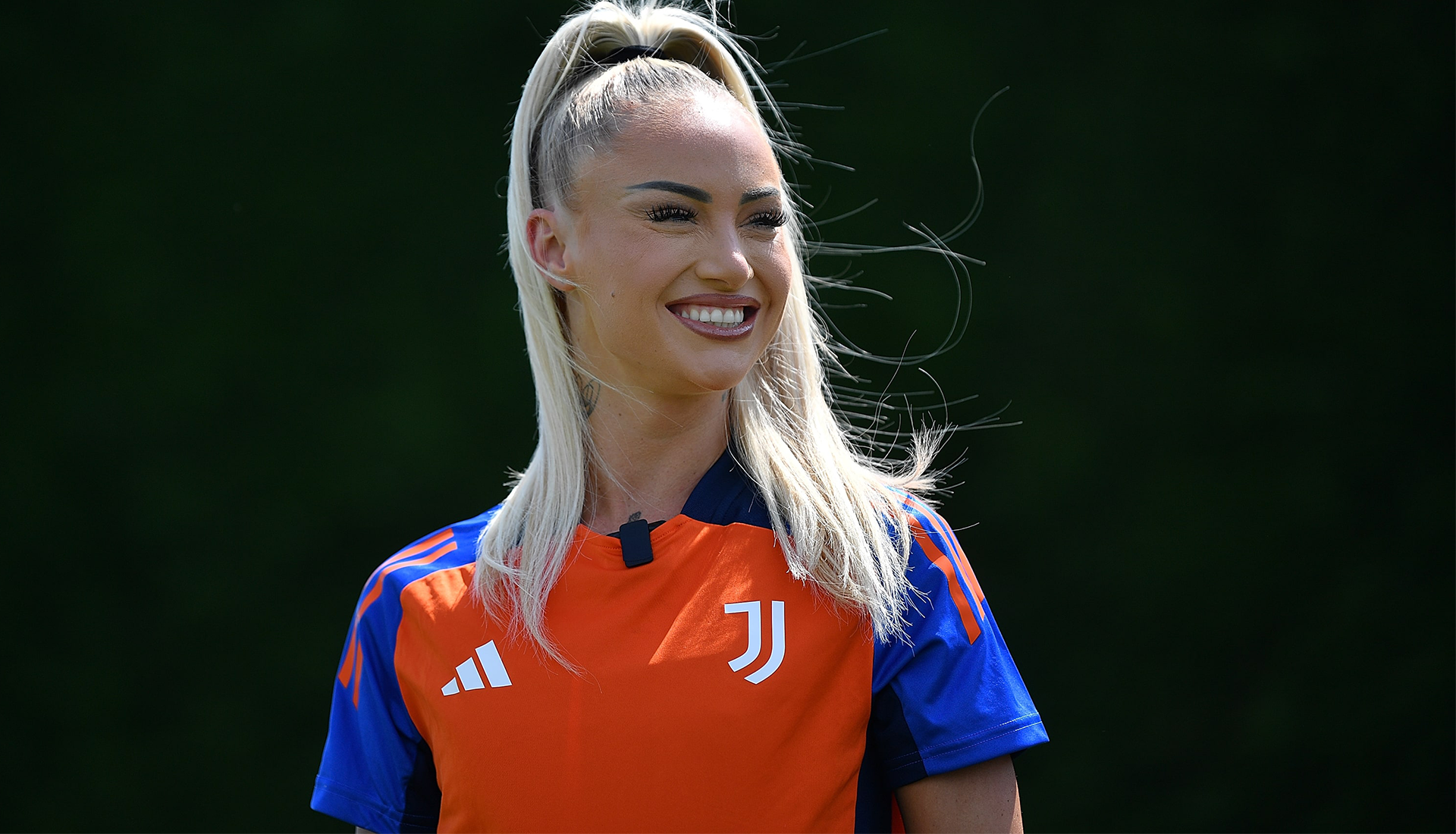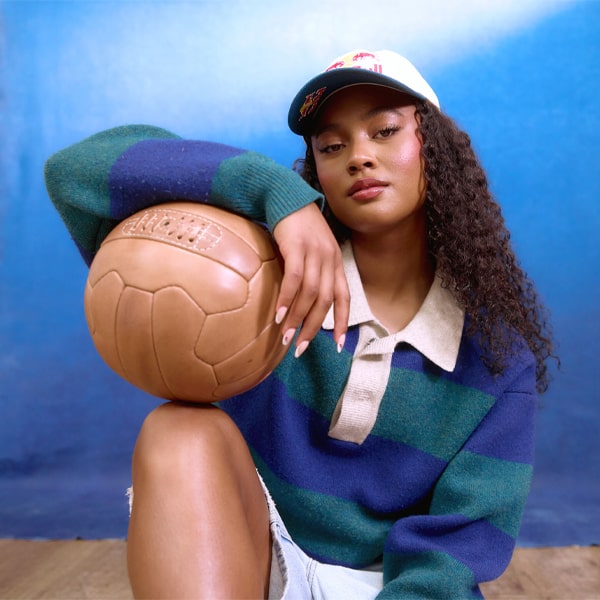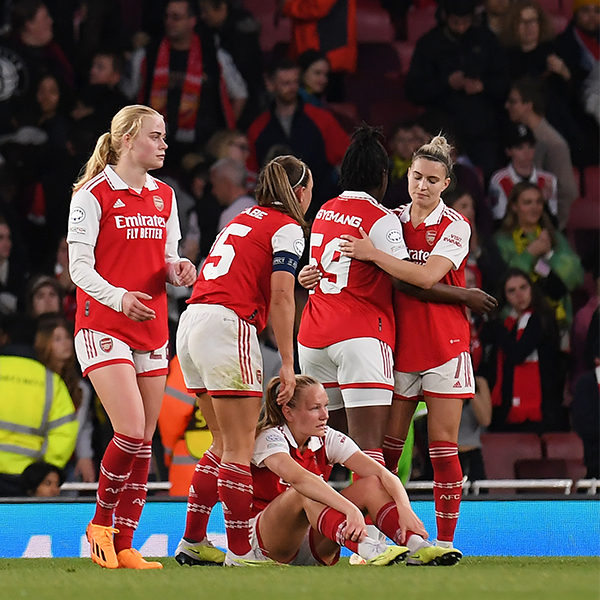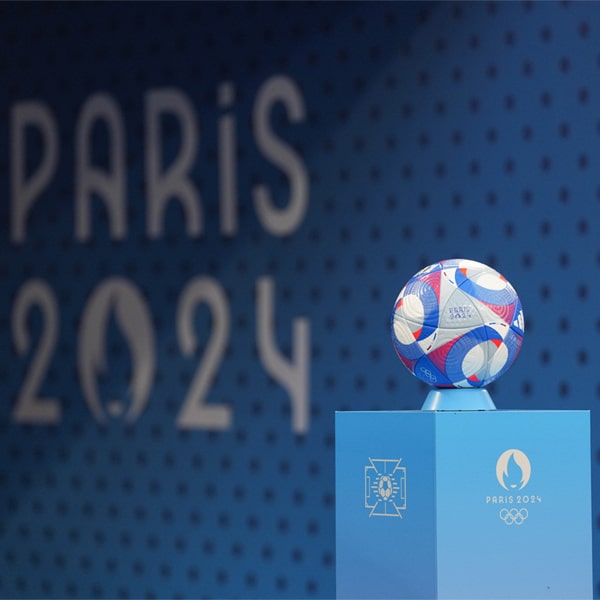Players are expressing and empowering themselves, sparking hair and make-up trends, and inspiring the next generation – as seen at the 2024 Olympics.
From Zambia’s Hellen Chanda’s sheer glossy red lips and blushed cheekbones to Adriana Leon’s (CAN) perfectly placed brows and contour, female footballers' hair, makeup, and nails looked better than ever at the 2024 Olympics. Following in Alisha Lehmann (SUI)’s wake, these ladies were ready for their television close-ups. It seems that with each Olympic cycle, athletes are getting more comfortable pushing beauty standards and taking the opportunity to flaunt their femininity on the world stage. When women’s football was introduced to the Olympics in 1996, it marked a significant milestone for female athletes. The sport has grown exponentially since then: approximately 40 million global viewers tuned in for the 1999 FIFA Women’s World Cup final. By 2019, the Women’s World Cup final drew a global audience of over 1.12 billion viewers and Visa became the first ever UEFA sponsor dedicated solely to women’s football in 2018.
As women’s football has evolved, so has the way female athletes present themselves. At the 1996 Olympic Games, Mia Hamm has a mid-length ponytail, baby hair flowing freely, and a fresh, clean face. A decade later at the 2008 Olympics, ponytails got sleeker, and one player, Hope Solo (USA), wore eyeliner and mascara. In 2020, Brazil’s legendary striker Marta Vieira da Silva made her fifth Olympic appearance with a full face of makeup and bright red lipstick as an extension of her beauty campaign for Avon. Red lipstick on the pitch? This was groundbreaking. Most recently at the Paris Olympics, lash extensions were seen on players like Jenni Hermoso (ESP) and Delphine Cascarino (FFF). And most notably, Trinity Rodman (USA) made her Olympic debut with long pink braids that you couldn’t miss, inspiring a young fan.
For decades, Olympic athletes have gone beyond their uniforms and considered beauty as part of their competition look. You’ve probably seen sprinter Sha’Carri Richardson’s extra long bedazzled nails or gymnast Sunisa Lee’s perfectly made up face with lash extensions and glossy lips — in their sports, beauty was normalised and expected in competition. Football, on the other hand, has a different story.
It’s been fun to see more female footballers show up on the pitch with makeup, reflecting how they look off pitch, but why did this shift happen? I think a combination of things contributed to this. Credit is due to BIPOC athletes trailblazing beauty standards in sports by showing up to compete looking unapologetically expressive through hair, makeup, and nails. Track legend Jamaica’s Shelly-Ann Frasier-Pryce who’s known for her world record speed and colourful hair said “It’s like my wigs are a superpower and I’m able to go into character and it’s almost like you feel invincible.” Even though Rodman typically wears braids, I like to think she felt empowered to rock pink coloured braids knowing other Olympians before her have paved the way.
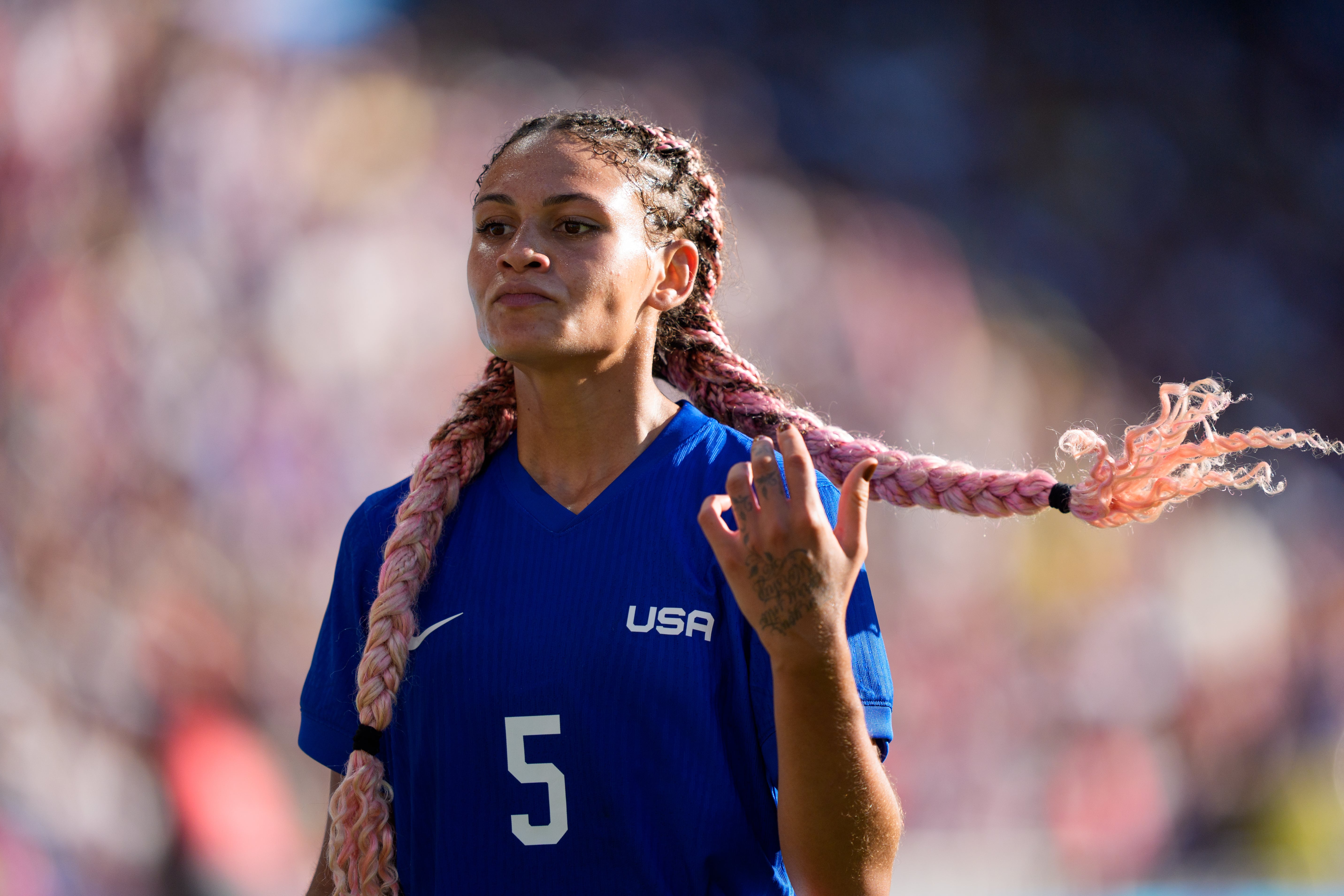
In 2017, Rihanna’s Fenty Beauty brand launched a foundation with 40 shades to help women of all skin tones feel included. This caused a trickle down effect and created an industry norm for inclusivity and perhaps beauty brands broadening their shade range and diversifying their models allowed athletes to feel fearless and feel comfortable wearing makeup on the pitch. And lastly, the pandemic significantly shifted beauty standards, creating a landscape that emphasised authenticity, self-care, and individual expression. During lockdowns, as social interactions became virtual, the focus on traditional beauty routines changed. The rise of #selfcare and #GRWM (Get Ready With Me) content on platforms like TikTok and Instagram led to a surge in interest in skincare and beauty that the community loved.
Around the same time, there was a parallel shift in how these athletes were perceived as more people embraced women’s football — not just as competitors but as cultural icons who could influence beauty and fashion trends. Players like Megan Rapinoe redefined what it meant to be an athlete in the modern era due to her advocacy for gender equality, social and political activism. She’s landed multiple magazine covers like Sports Illustrated (2019) and Time (2019) but for me, the most surprising and transcending partnership was with luxury brand, Loewe, in 2021. The Spanish fashion house collaborated with the lilac-haired American to emphasise individuality and self-expression while bridging the worlds of football and fashion.
I was happy to hear that earlier this year, Matildas’ star Mary Fowler scored a partnership with L’Oreal. The Australian and New Zealand ambassador is the beauty brand’s first ever female athlete where L’Oreal is hoping to leverage “her infectious personality, strength, and how she continues to stay true to her authentic self to spread the brand message of self worth and empowerment." I looked and could only find a few footballers to score a beauty partnership of this scale: Alex Morgan and Chapstick (2013) and Rapinoe and SHIESEIDO (2022). In 2022, New York-based makeup brand Il Makiage partnered with Arsenal Women “to inspire women of all ages to unleash their boldest most badass side.” While it’s unclear of the fiscal impact of these partnerships, seeing a beauty brand and football team partner is an exciting and inclusive step in the right direction for athletes and beauty.
On Instagram, Lioness Ella Toone posted her sponsored #skincare routine featuring luxury makeup brand Charlotte Tilbury with the caption reading, “Feel good. Look good. Play good.” Natural skin care brand, Burt’s Bees just started partnering with players from NWSL’s North Carolina Courage to promote their Facial Toilettes on Reels. I know large campaigns are tougher to come by, so why aren’t there more of these sponsored Reels from footballers? Juventus striker Lehman consistently shows up to games with full-on glam. We’re talking nails, brows, lash extensions, lipliner, gloss, eyeshadow, and foundation. She shares plenty of makeup looks with her 17 million Instagram followers and it’s surprising that there are no beauty tags or sponsored makeup posts.
The USA’s Jaedyn Shaw recently mentioned on a panel that she loves makeup and wears tinted SPF, mascara, and brow product when she plays. It's clear that beauty and football are normalised and have even transcended from professional footballers all the way to aspiring youth athletes. Seventeen-year-old youth player Meg from the US says that she and her “teammates all wear mascara and sunscreen” and that getting their nails done is important too. She explains, “I think we wear makeup because when you feel like you look good, you feel good. Sports is so mental and when you feel good about yourself you have the confidence you need to play your best.” Football creative, DJ, and former pro player Florencia Galarza adds,“Make-up makes me feel incredibly fierce even if I only have a shimmer on the lid and a glossy lip. Especially when people think I’m weak and dainty for wearing it on the pitch but then turns out I’m a fucking bad ass who bodies them, steals the ball, runs faster, hits harder and scores goals.”
So, how can beauty and football continue to evolve? Consider the familiar and established phenomenon of football and fashion and the journey the two have taken to influence cultural shifts that shape how we view footballers today. Athletes authentically led the way, people talked, and brands dared to be different. Can you imagine if a young girls queued for the next Alisha Lehmann and [insert beauty brand] lipgloss or people reselling a footballer collaboration beauty product? Or if more footballers started their own beauty brand like Leslie Osborne Lewis, Taryn Colborne, Courtney Jones Louks, and Lindsay Tarpley Snow did with Hustle Beauty (previously Sweat Cosmetics)? This is the future.
The 2024 Olympics has further proved that beauty and football is here to stay. I know most of us have learned of new athletes from watching and I’m looking forward to seeing how these athletes continue to use beauty in their regular season. I hope beauty brands also pay attention because as footballers continue embracing beauty on the pitch, there’s an opportunity to continue evolving beauty standards - from the way makeup is advertised through athletes of all colours and sizes to even developing products that suit the needs of sweaty athletes. While I’m not a professional footballer, I do feel more inspired by an active competitive athlete than a six feet glamazon and I’d love to see the beauty industry embrace diverse, strong, and powerful women for our generation and the next. Hopefully it doesn’t take too long because we're witnessing a shift in sports where athletes are the new models and beauty isn't limited to actresses and celebrities.
